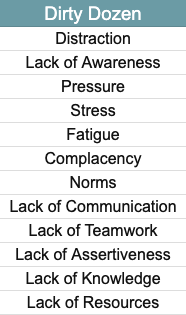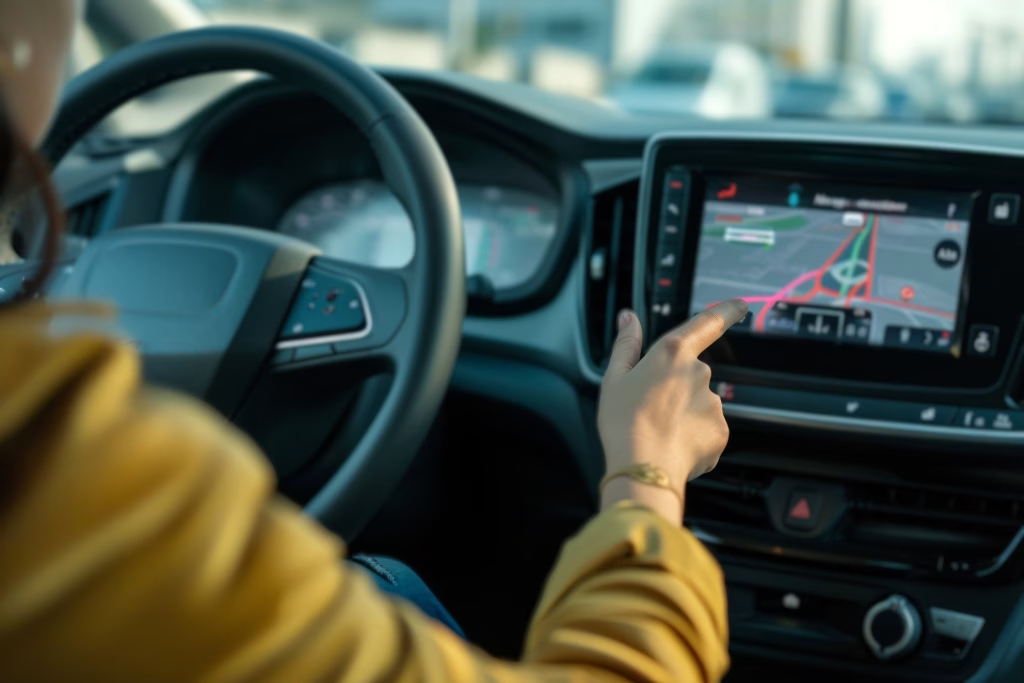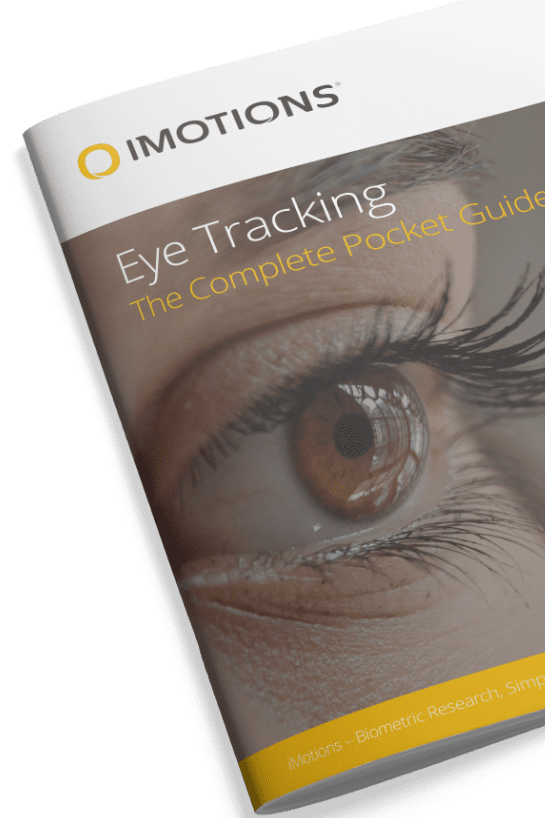The Dirty Dozen, a human factors framework for identifying sources of error, transformed aviation safety. This article explores how these principles can enhance automotive safety through biosensor research. By monitoring driver conditions and environmental factors, we can further reduce accidents. Discover how aviation’s safety lessons can innovate vehicle safety and improve transportation safety.
Table of Contents
- Flying is Safe
- A Pivotal Time in Aviation Safety
- The Essence of the Dirty Dozen
- Physiological Metrics and the Dirty Dozen
- Attention in the Dirty Dozen: Distraction and Lack of Awareness
- Dirty Dozen Lack of Communication
- Dirty Dozen: Lack of Teamwork
- Dirty Dozen: Lack of Assertiveness
- Dirty Dozen: Lack of Knowledge
- Dirty Dozen Lack of Resources
- Conclusion
- Human Factors in Automotive Human Machine Interface
- Eye Tracking
The Dirty Dozen is a human factors framework for identifying sources of human error that revolutionized safety in the aviation industry. In light of continuous advancements in the automotive and transportation industries, this article explores how lessons in flying will drive safety innovation in vehicles. Additionally, this article will show how biosensor research holds significant promise in enhancing transportation safety even more by monitoring driver condition and environmental factors in real-time.
Takeaways:
- Discussion of the current state of safety in aviation and implications for safety research in the automotive industry.
- History of the Dirty Dozen, 12 factors that contribute to human errors
- How the Dirty Dozen can be measured with physiological metrics
Flying is Safe
Air travel is considered an incredibly safe mode of transportation and 2023 was one of the best years for aviation safety on record. Amongst all IATA member airlines (330 airlines in over 120 countries making up 80% of the world’s air traffic), there were zero fatal accidents in commercial aviation despite having 32 million flights.
Thirty-two million flights. Zero fatal accidents for commercial aviation.
We often hear that flying a plane is safer than riding in a car. According to the World Health Organization over one million people die every year in road traffic accidents. Human factors research within the automotive industry investigates how features in the car can prevent traffic accidents. The aviation industry has been a leader in the development of human factors research, particularly in relation to passenger safety. But flying has not always been as safe as it is today.
A Pivotal Time in Aviation Safety
The 1989 crash of Air Ontario Flight 1363 was a pivotal moment in aviation safety in North America. Taking off from Dryden, Ontario, multiple factors contributed to the Fokker F28 barely gaining altitude, catching fire, and crashing into the trees at the end of the runway, killing 24 people. Justice Moshansky led a commission that produced a groundbreaking report of nearly 200 recommendations that not only focused on the decisions of the pilots and technical failures, but also explored managerial and systemic issues surrounding the Dryden accident.
Gordon Dupont, an observant accident investigator inspired by Moshanksy’s report, became part of a committee focused on preventing similar accidents. According to his daughter, this committee focused on maintenance error records “that could be categorized as ‘careless’” and identified twelve common causes of human errors “we never intend to make”. Gordon Dupont is credited for forming a list of factors that contribute to human errors called the “Dirty Dozen”. This safety poster campaign has shaped human factors research in many industries including transportation, construction, and medicine.
The Essence of the Dirty Dozen
What Moshansky and Dupont seemed to understand was that categorizing accidents as “careless” causes us to overlook opportunities to prevent them from recurring. We are all prone to make mistakes and human factors research aims to design systems with fallible people in mind so that they are “resilient to unanticipated events”. Understanding factors that increase the likelihood of mistakes and preventing their occurrence prevents “careless” accidents. These factors can occur on the individual or organizational level.

Physiological Metrics and the Dirty Dozen
Advancements in safety in the automotive and transportation industries are similar to those in aviation. Human factors research has altered cockpit layouts and vehicle dashboards. Autopilot and flight management systems are already well integrated into aviation, while autonomous vehicles and driver assistance systems are being developed and improved for automobiles. Fatigue detection systems are being developed for both aviation and automotive industries.
The dirty dozen framework that helped reduce accidents in aviation is also helping human factors researchers understand causes of traffic accidents. iMotions software is an invaluable tool in human factors research, because it makes it possible to record multiple physiological metrics simultaneously, making data synchronization and visualization easy. Our software is used for testing advancements in safety technology so that manufacturers can know which changes are effective and how new technology influences human behavior.
Attention in the Dirty Dozen: Distraction and Lack of Awareness
Distracted driving is one of the leading causes of traffic fatalities. Distraction includes looking at a cell phone or navigation system, eating and drinking, or interacting with other people in the vehicle while driving.

Lack of awareness in human factors research focuses on situational awareness. Situational awareness in the context of driving includes:
- checking the sides of the roads for animals that may attempt to cross in more rural areas.
- stopping when you see a ball roll into the street in a neighborhood, anticipating that it might be followed by children
- taking extra time at particularly busy intersections
- being aware of bicycle lanes in a city.
- Understanding the size of blind spots when driving around large vehicles.

Distraction involves a temporary shift in attention, while lack of awareness is not being fully cognizant of relevant factors in the environment. Both can be measured with eye tracking or EEG.
________________________________
SOLUTIONS: Driver Monitoring Systems use cameras and sensors to monitor driver behavior and provide feedback on risky actions like distracted driving or drowsiness. For more information, visit SmartEye.
________________________________
Mental Health in the Dirty Dozen: Pressure, Stress and Fatigue
The driver’s mental state in terms of pressure, stress and fatigue affects the driver’s ability to drive safety.
Pressure is often external and related to specific expectations, demands, or constraints imposed on individuals. It can come from supervisors, colleagues, organizational goals, or performance targets. It can also be internal in cases of wanting to impress or please others. Pressure can motivate individuals to perform better, but unmanageable pressure can lead to poor decision-making, anxiety and stress. Self-report tools can give insights into the pressure an individual is experiencing, while biosensors can give insights into the physiological reactions of the stress.

Stress is an internal response to challenging or threatening situations. It can stem from various sources, such as tight deadlines, high workload, conflicts, or uncertainty. Stress can impair good decision-making, increase the likelihood of errors, and lead to decreased concentration and memory. Stress has been measured with ECG, GSR, EEG, and respiration metrics.
Fatigue is an internal state of physical or mental exhaustion resulting from prolonged periods of work, inadequate rest, or disrupted sleep patterns. Fatigue can impair reaction times, decrease awareness, and hamper decision-making abilities. In safety-critical industries, fatigue is a significant concern as it can lead to errors, accidents, and reduced vigilance. Fatigue has been measured with EEG, ECG, GSR, eye tracking, respiration metrics.
________________________________
Electronic Logging Devices (ELDs): ELDs track driving hours electronically to ensure compliance with hours-of-service regulations and prevent driver fatigue.
________________________________
Dirty Dozen: Attitudes
Complacency reflects an individual’s mindset of familiarity and often repetitiveness of their responsibilities which leads to indifference toward safety risks. This could be driving more recklessly in areas you are familiar with. Bus drivers and delivery drivers often have to follow the same route and make the same stops.
Norms reflect the collective behaviors and attitudes within a group that may shape individual actions. Rolling stops at stop signs, not obeying traffic signs when there appears to be no one around. Not using turn signals. How much distance is kept between cars. In many places, there is a norm of driving slightly over the speed limit.

A lack of change in facial expression or arousal (GSR), in a situation where changes would be expected, could provide evidence of complacency or norms. Eye tracking can also be used to see what driver’s are paying attention to and evaluate whether their attention changes during these more risky behaviors.
Dirty Dozen Lack of Communication
Traffic signs are an extremely important communication tool for safety and navigation which are relevant for commuters and commercial drivers. Signals from the driver are also important communication tools while driving. This includes turn signals, brake lights and hazard lights. Turn signals are susceptible to local norms. Eye tracking can be used to detect whether drivers notice traffic signs or signals form other drivers.

Dirty Dozen: Lack of Teamwork
For commercial drivers in logistics and transportation, many countries implemented legislation regarding how many hours a driver can drive per day, in order to prevent fatigue. However, because there is a lot of pressure on companies to deliver goods quickly, many logistics companies implemented team driving. While this is a clever solution, this is also many hours to spend with someone in close quarters.
Measures of arousal (such as heart rate and respiration) give an indication of the tension experienced by the individuals in this team. Voice analysis provides insights from verbal communication that goes beyond just the words being used.
Dirty Dozen: Lack of Assertiveness
Assertive driving is about communication, similar to how turn signals indicate your intentions to other drivers. Being unclear about your intentions to change lanes or tapping the brakes, can send mixed messages to other drivers. Understanding which driving behaviors typically cause confusion to other drivers is an important area of research and crucial to the development of self-driving vehicles.
Assertive driving is not to be confused with aggressive driving. We have all encountered a driver, powering down a lane rather than waiting for lanes to merge, or racing through an intersection during a yellow light and inevitably running a red. Often this is a result of complacency or pressure, in which biosensors can be used as described above.

Dirty Dozen: Lack of Knowledge
This is an area in which the automotive and transportation industry has made a lot of developments. Newer vehicles (and mobile phones) have GPS-navigation so that you know where you are, are informed about upcoming construction and traffic, have options for alternative routes and can compare your current speed with the posted speed limit. Some even have features that assist with hazardous driving conditions such as ice on the road.
Technology to assist drivers with parking has become popular in new vehicles. Rearview cameras help drivers get a wider visual range than the rearview mirror and many newer vehicles are equipped to audibly indicate how close the vehicle is to surrounding objects.
Similar to other Dirty Dozen culprits, eye-tracking is useful to determine whether the driver has directed their eyes toward this information, how often they check this information, and when they decide is a good time to check this information.
Dirty Dozen Lack of Resources
Sensors related to the maintenance of a vehicle such as how much fuel (or battery) is left, whether there is the air pressure of the tires, or the infamously vague “check engine” light have been in use for some time. There are also sensors to indicate whether there is sufficient wiper fluid, or some vehicles indicate whether it is time for an oil change. All of these are indicators of resources in a car. Eye-tracking can be used to test whether drivers pay attention to these sensors.

Conclusion
Dirty Dozen is a framework for sources of human error that is as relevant for the automotive, transportation and logistics industries as it has been for aviation. Physiological metrics are useful for investigating these common sources of error. iMotions software streamlines the process of synchronizing hardware for collecting these metrics, collecting/analyzing data and producing intuitive visuals of that information.
If you’d like to learn more about using iMotions software to investigate opportunities to improve automotive safety, please get in touch with us.
Human Factors in Automotive Human Machine Interface
Get an in-depth look at how iMotions is revolutionizing the automotive industry through advanced Human-Machine Interface (HMI) design research. Through iMotions’ collaboration with Smart Eye to integrate emotion analytics and eye-tracking technologies into the automotive design process, ensuring that vehicle interfaces are intuitive, safe, and tailored to enhance driver experience.

Eye Tracking
The Complete Pocket Guide
- 32 pages of comprehensive eye tracking material
- Valuable eye tracking research insights (with examples)
- Learn how to take your research to the next level











